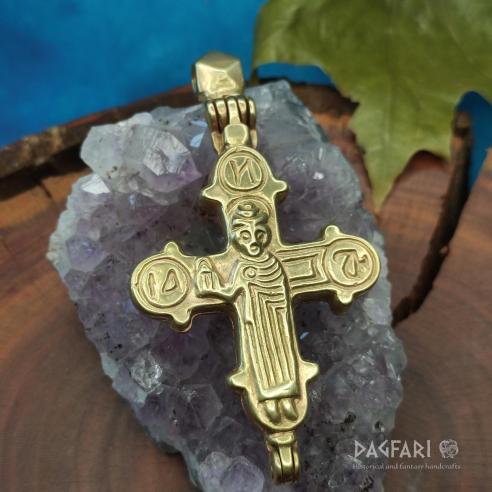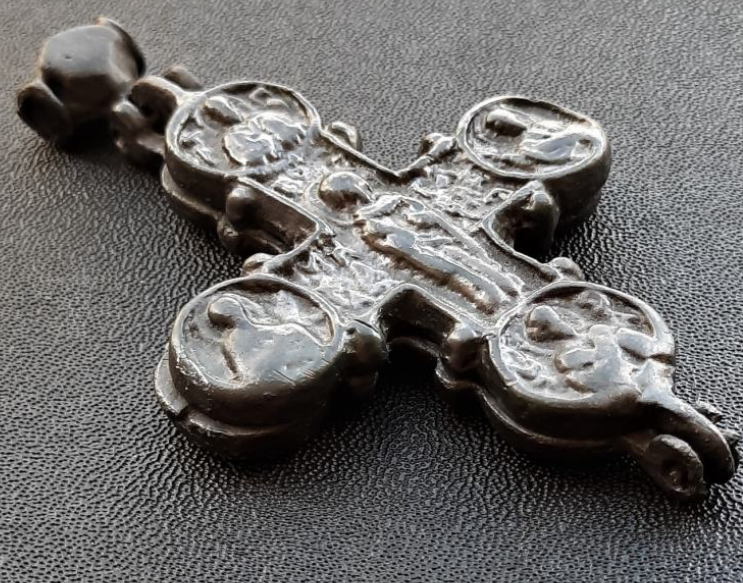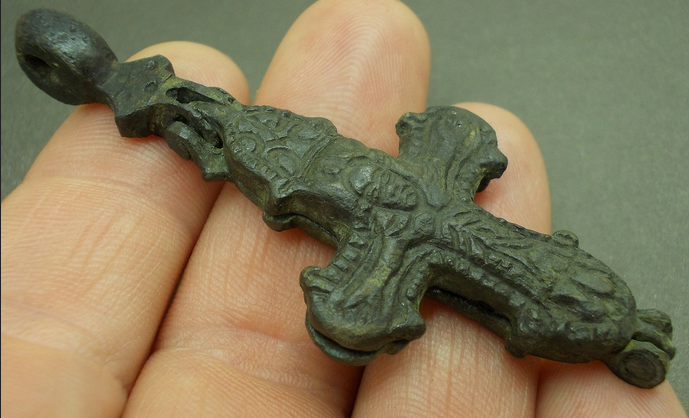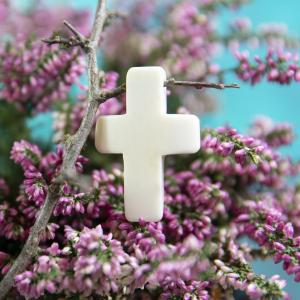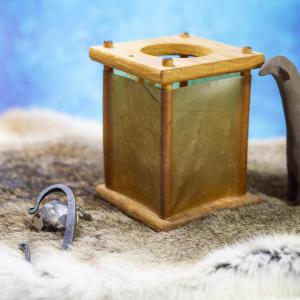Various reliquaries for the relics of saints or pieces of leaves from the Bible were already popular in the early Middle Ages. Seventeen such crosses dating back to the 10th-13th centuries have been found in the Czech Republic alone. These typical opening two-part crosses can still be seen today on the Eastern faithful in practically unchanged form. One side often depicts Jesus, the other side depicts the Virgin Mary in a long robe.
This cross is enclosed and snaked, but if you wish, it can be used exactly as it was chosen for since around the year 1000. The thimble can be knocked out or unscrewed, a precious object inserted and re-set.
On this one are depicted Saints Boris and Gleb (Roman and David of the Rurik family). These two sainted brothers were murdered by their half-brother Svyatopluk in a power struggle after the death of their father Vladimir I Svyatoslavich in 1015 and then became martyrs in 1072 and declared the first saints in Kievan Rus and then, for their pacifist conciliatory attitude and refusal to resist their murder, patrons of the Russian lands.
Of Vladimir's twelve sons, these two were his favourites. After his father's death, however, Sviatoslav began to fear that perhaps these two brothers would aspire to his throne and had them assassinated. Boris at the morning service, Gleb was betrayed and murdered by his cook. The brothers knew of the plotting of their murders and yet they heeded the call of their half-brother to come to Novgorod. A hundred years after their deaths, Nestor writes about their lives and deaths and portrays them as very pious men who heroically walked to their deaths, refusing to raise a weapon in their defense and not believing until the last moment that their brother would want to kill them.
Their deaths have a very similar effect to the death of St. Wenceslas in Bohemia - it promotes Christianization and faith in the early Middle Ages, reinforcing the belief in domestic saints, overthrowing an inconvenient brother-king, and also reinforcing the family name from which the saints sprang.
Weight: 36 g
Size: 8 x 4,3 x 0,7cm
Size of hole for threading: 0,5 cm






